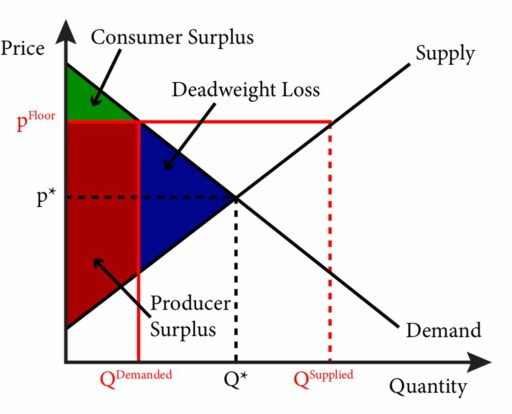In the dynamic world of electric vehicle stocks, Rivian Automotive, Inc. (RIVN) stands out with its remarkable volatility and growth potential. This article delves into Rivian’s market position, technical and fundamental analysis, and investor sentiment to provide a comprehensive overview of RIVN stock’s price trends and projections. With recent price drops and fluctuating investor confidence, understanding the nuances of Rivian’s stock is crucial for informed investment decisions.
Key Takeaways
- Rivian’s stock has experienced notable volatility, with recent sharp declines signaling investor concern over short-term prospects.
- Technical analysis indicates that Rivian’s stock price is influenced by various factors, including candlestick patterns and analyst price targets.
- Fundamental analysis reveals Rivian’s potential for revenue growth, despite current unprofitability and challenges in becoming profitable in the near future.
- Investor sentiment is mixed, with high implied volatility suggesting the possibility of significant price swings in the short term.
- Strategic investment in Rivian requires careful consideration of the company’s market position, technical and fundamental analyses, and the balance between portfolio diversification and risk management.
Understanding Rivian’s Market Position

Company Overview and Core Business
Rivian Automotive, Inc., often recognized by its ticker symbol RIVN, has emerged as a significant player in the electric vehicle (EV) industry. Rivian focuses on the design, development, manufacturing, and sales of electric vehicles and accessories. This approach positions the company within a niche market of electric trucks and SUVs, aiming to cater to a segment that values sustainability without compromising on performance and utility.
The company’s core business revolves around its flagship products, the R1T electric pickup truck, and the R1S electric SUV. Rivian has also been developing a fleet of electric delivery vans for Amazon, one of its major investors. The strategic partnership with Amazon not only provides a steady demand for Rivian’s vehicles but also showcases the company’s capability to design and produce EVs that meet specific commercial requirements.
Rivian’s commitment to innovation and sustainability is reflected in its product lineup and business partnerships, which are central to its market position.
Rivian’s market approach is further characterized by its direct-to-consumer sales model, bypassing traditional dealership networks. This model allows for a closer customer relationship and potentially higher margins. However, it also requires a robust infrastructure for vehicle servicing and support, which Rivian is actively developing.
Competitive Landscape and Market Share
Rivian Automotive Inc (RIVN) operates in the highly competitive electric vehicle (EV) market, where it strives to carve out a significant market share against established giants and innovative startups. Rivian’s competitive edge is often attributed to its focus on electric trucks and SUVs, a segment that has been relatively untapped by other major EV players. However, the company faces stiff competition from traditional automakers pivoting to electric, as well as from pure EV manufacturers like Tesla.
Despite the challenges, Rivian has managed to generate a buzz in the market, reflected in its quarterly revenue growth of 0.983. Yet, the company’s financial metrics such as Revenue Per Share (4.682), Return On Assets (-0.21), and Return On Equity (-0.47) indicate that it is still in the early stages of growth and has significant ground to cover.
Rivian’s journey in the EV market is marked by both opportunities and challenges. The company must navigate through a landscape of intense competition and high consumer expectations to establish a lasting presence.
Analyst recommendations and target price estimates are crucial for investors to gauge the market’s confidence in Rivian’s potential to increase its market share. The company’s strategic moves and product launches in the coming years will be pivotal in determining its position in the EV industry.
Financial Health and Snowflake Score Analysis
Rivian’s financial health, as indicated by its Snowflake Score, presents a mixed picture. The company’s current ratio of 4.95 suggests a strong ability to meet short-term obligations, which is a positive sign for investors. However, the Debt to Equity ratio of 0.56, while not alarming, warrants attention as the company scales its operations.
The Snowflake Score, which assesses a company’s performance across multiple dimensions, gives Rivian a moderate rating. This reflects the company’s potential for future growth but also underscores the risks associated with its current unprofitability and the dilution of shareholder value in the past year.
Rivian’s financial ratios and Snowflake Score highlight the importance of monitoring its financial stability as it navigates the competitive electric vehicle market.
| Financial Ratio | Value |
|---|---|
| Current Ratio | 4.95 |
| Quick Ratio | 3.83 |
| Debt to Equity | 0.56 |
| ROE (Return on Equity) | -49.20% |
| ROIC (Return on Invested Capital) | -40.25% |
| Interest Coverage | -23.69 |
Technical Analysis of RIVN Stock

Recent Price Fluctuations and Trends
Rivian’s stock price has been subject to significant volatility, reflecting the broader uncertainty in the electric vehicle market. The stock lies in the middle of a very wide and falling trend in the short term, indicating potential instability ahead. Analysts suggest that, given the current trend, a further decline is expected in the next few months.
The predicted opening price based on recent movements suggests a slight increase, but this is within a narrow margin and subject to rapid change.
Here’s a snapshot of Rivian’s recent stock performance and analyst expectations:
| Date | Opening Price | Expected Range (3 months) | Analyst Consensus |
|---|---|---|---|
| Mar 6, 2024 | $10.92 | $5.04 – $8.75 | Negative |
Despite the gloomy short-term outlook, revisions in earnings per share (EPS) and growth estimates show a mix of upward and downward trends, reflecting the complexity of forecasting Rivian’s future. The EPS revisions for the upcoming quarters and the growth estimates for the next five years suggest that investors are weighing the potential for recovery against the risks inherent in the sector.
Candlestick Patterns and What They Indicate
Candlestick patterns are a cornerstone of technical analysis, providing insights into market sentiment and potential price movements. Investopedia defines candlestick patterns as price formations that may hint at the future direction of a price. For Rivian (RIVN), understanding these patterns can be crucial for predicting short-term price actions.
Recent analysis of RIVN stock reveals a bearish trend, with sell signals from both short and long-term moving averages. The long-term average positioned above the short-term average suggests a sustained downward pressure. Here’s a simplified view of the current technical indicators:
- Moving Average Convergence Divergence (MACD): Sell signal
- Short-term Moving Average: Below long-term average
- Resistance Levels: $11.09 and $14.58
In the context of Rivian, candlestick patterns should be considered alongside other technical tools, such as MACD and moving averages, to form a more comprehensive view of the stock’s trajectory.
Analysts also pay close attention to the volume of trades and the intensity of buying or selling pressure, which can be inferred from specific candlestick formations. For instance, a long-bodied candlestick may indicate strong buying or selling activity, while a short-bodied version could suggest consolidation.
Analyst Price Targets and Consensus
The consensus among market analysts suggests a positive outlook for Rivian’s stock. The average 12-month price target stands at $18.42, which represents a significant upside of 68.53% from the current price level. The spectrum of analyst opinions ranges widely, with the highest target set at $36.00 and the lowest at $8.00, reflecting the varying degrees of optimism and caution in the market.
| Analyst Consensus | 12-Month Price Target | % Upside |
|---|---|---|
| High | $36.00 | +150.00% |
| Average | $18.42 | +68.53% |
| Low | $8.00 | -26.97% |
Despite the challenges faced by Rivian, the aggregated analyst ratings lean towards a ‘Buy’ recommendation, with a median target price of $32.50. This indicates a belief in Rivian’s capacity to navigate through its current difficulties and realize its long-term growth potential.
The divergent views among analysts underscore the inherent uncertainties in forecasting stock performance, yet the prevailing sentiment remains cautiously optimistic about Rivian’s future.
Fundamental Analysis and Future Projections

Revenue Growth Forecasts
Rivian Automotive, Inc. has been a subject of keen interest among investors, particularly in light of its revenue projections. Analysts have adjusted their expectations, signaling a more conservative outlook for the electric vehicle manufacturer’s financial trajectory. The consensus suggests a notable deceleration in revenue growth as we approach 2024.
Revenue estimates for the upcoming quarters and fiscal years reflect this sentiment:
| Period | Q1 2024 | Q2 2024 | FY 2024 | FY 2025 |
|---|---|---|---|---|
| Average Estimate | $1.11B | $958.65M | $4.83B | $7.81B |
| Low Estimate | $1.04B | $449.44M | $4.32B | $5.88B |
| High Estimate | $1.24B | $1.26B | $5.64B | $10.27B |
| Year Ago Sales | $661M | $1B | $4.43B | $4.83B |
| Sales Growth (year/est) | 68.20% | -4.10% | 8.90% | 61.70% |
While the numbers indicate a robust growth in the next fiscal year, the immediate quarters show a mixed picture, with a potential decline in Q2 2024 compared to the same quarter in the previous year.
The market’s reaction to these forecasts will be crucial for Rivian’s stock performance. Investors are advised to monitor these figures closely as they may significantly influence the company’s valuation and the stock’s volatility.
Profitability and Earnings Outlook
Rivian’s journey towards profitability is closely monitored by investors, with earnings per share (EPS) expected to be a key indicator of the company’s financial turnaround. Forecasts suggest a significant uptick in EPS growth, with projections indicating an annual increase of 16.8%. This optimism is reflected in the anticipated revenue growth, which analysts predict will surge by 32% per annum.
The following table summarizes the EPS trend and revisions, highlighting the dynamic nature of Rivian’s financial projections:
| Quarter | Current Estimate | 7 Days Ago | 30 Days Ago | 60 Days Ago | 90 Days Ago |
|---|---|---|---|---|---|
| Mar 2024 | -1.15 | -1.15 | -1.05 | -1.08 | -1.08 |
| Jun 2024 | -1.13 | -1.11 | -0.94 | -0.98 | -0.98 |
| FY 2024 | -4.03 | -3.98 | -3.56 | -3.55 | -3.48 |
| FY 2025 | -2.52 | -2.43 | -2.16 | -2.16 | -2.05 |
Despite the positive outlook, Rivian’s financial health remains a concern, with a return on equity (ROE) of -49.20% and a debt-to-equity ratio of 0.56. The company’s ability to improve these metrics will be crucial for long-term sustainability and investor confidence.
Rivian’s EPS growth and revenue forecasts are promising, yet the company must navigate a challenging path to profitability, balancing investment in innovation with financial discipline.
Risks and Challenges Ahead
Rivian’s journey forward is fraught with uncertainties that could impact its stock performance. Production scalability remains a critical concern, especially in light of recent guidance that predicts flat production levels in 2024 compared to 2023. This stagnation in vehicle output may signal underlying issues in manufacturing efficiency or supply chain management.
Financial headwinds are also evident, with analysts revising revenue estimates downwards by 19%, reflecting skepticism about the company’s revenue growth trajectory. The adjustments in sales forecasts by analysts further underscore the challenges Rivian faces in a competitive EV market.
Rivian’s success hinges on its ability to overcome these obstacles and capitalize on its innovative technology within the burgeoning electric vehicle sector.
Despite these risks, Rivian’s market position could be bolstered by strategic initiatives and a focus on long-term value. Investors should weigh the market context before making investment decisions, considering both the potential rewards and the risks associated with Rivian’s stock.
Investor Sentiment and Stock Volatility

Implied Volatility and Market Expectations
Rivian Automotive’s implied volatility (IV) is a critical indicator of market sentiment, reflecting the expected magnitude of price movements without predicting the direction. High IV indicates anticipation of significant price swings, while low IV suggests a more stable stock price outlook. As of the latest data, Rivian Automotive’s IV stands at 144.58, signaling a market braced for volatility.
The concept of implied volatility is particularly relevant when considering options trading. It’s important to note that IV does not provide a directional forecast but rather the expected range of movement. For Rivian, the current IV level implies that traders should prepare for potentially large price shifts.
Rivian’s stock may exhibit substantial movement within a single trading day, with recent activity showing a 5.22% fluctuation between the high and low. Weekly volatility has been recorded at 5.89%, underscoring the need for investors to be vigilant.
Understanding IV is essential for investors looking to gauge the risk associated with Rivian’s stock. It serves as a barometer for the market’s expectations and can influence investment decisions, particularly in the options market.
Shareholder Dilution Concerns
Rivian’s journey as a publicly traded company has been marked by significant events that have raised concerns over shareholder dilution. Recent executive stock sales and share dilution have been a source of unease among investors. The trend of insiders selling stock, such as the Chief Financial Officer and Chief People Officer, signals potential caution to shareholders. Additionally, the increase in shares outstanding by 3.72% year-over-year further exacerbates these concerns.
Shareholder dilution can erode the value of existing shares, making it a critical factor for investors to monitor closely.
The table below summarizes the recent changes in Rivian’s share structure:
| Date | Event | Impact on Shares |
|---|---|---|
| Jun 22 | Chief Accounting Officer sold stock | -US$453K worth of stock |
| Nov 20 | Chief People Officer intention to sell stock | – |
| Apr 14 | Consensus revenue estimates decrease | -20% |
| Yearly | Shares outstanding increase | +3.72% YoY |
While Rivian reaffirms its production guidance, the market’s reaction to these developments has been reflected in the stock’s volatility. Investors are advised to weigh the potential for growth against the risk of dilution when considering Rivian’s stock for their portfolios.
Stability of Share Price Over Time
The stability of Rivian’s share price has been a topic of interest for investors, especially considering the company’s position in a highly volatile market. An analysis of Rivian’s financial statements indicates that the company is scaling its operations, which is a positive sign for potential investors. However, the stock has shown significant fluctuations, reflecting the challenges of a nascent industry and the company’s growth phase.
The stock lies in the middle of a very wide and falling trend in the short term, suggesting that investors may need to brace for potential dips in the near future. This volatility can be attributed to various factors, including market sentiment, production updates, and financial restructuring news.
Predictions for stock performance indicate that, in the short term, Rivian’s stock might experience volatility, particularly around the next trading day and the following week. The table below presents a structured view of the recent earnings per share (EPS) data, which is a key indicator of the company’s profitability and often impacts stock stability:
| Quarter | EPS |
|---|---|
| Q1 | -0.45 |
| Q2 | -0.56 |
| Q3 | -0.35 |
| Q4 | -0.79 |
Given the current trends and the potential for further decline, investors are advised to monitor the stock closely and consider the long-term prospects of Rivian’s market position and product pipeline.
Strategic Insights for Potential Investors

Assessing Investment Potential in RIVN
When evaluating Rivian’s investment potential, investors must weigh technical indicators against fundamental metrics. RIVN’s current downtrend, as shown by its position below the 50-day and 200-day moving averages, raises caution. The RSI nearing oversold levels may hint at a rebound, but the negative MACD value suggests bearish sentiment persists.
Fundamentally, Rivian’s forecast for revenue growth is promising, with expectations of a 31.98% increase per year. However, concerns such as shareholder dilution and the lack of profitability over the next three years cannot be overlooked. The company’s financial health, with a Snowflake Score of 5/6, indicates some resilience.
Given these mixed signals, investors should adopt a balanced approach, considering both the potential for growth and the inherent risks. A ‘Hold’ recommendation seems prudent, with a watchful eye on Rivian’s future performance and market trends.
Portfolio Diversification and Risk Management
In the realm of investing, diversification is key to mitigating risk. A well-diversified portfolio can help investors navigate the inherent volatility of the stock market, including the fluctuations of Rivian’s stock (RIVN). Diversification involves spreading investments across various asset classes, sectors, and geographies to reduce the impact of any single investment’s performance on the overall portfolio.
Effective risk management also requires regular portfolio review and adjustment. This ensures that the portfolio remains aligned with the investor’s risk tolerance and investment goals. Tools such as financial widgets and backtesting can aid in this process, providing insights into how a portfolio might perform under different market conditions.
- Backtesting: Evaluate historical performance to anticipate potential future outcomes.
- Financial Widgets: Integrate real-time data for ongoing portfolio analysis.
- Global Markets Map: Monitor worldwide indices for broader market trends.
- Analyst Advice: Consider expert opinions and target price estimates.
By maintaining a diversified portfolio and utilizing strategic tools, investors can better manage risk and position themselves for long-term success.
Long-term vs Short-term Investment Strategies
When considering Rivian’s potential as an investment, it’s crucial to distinguish between short-term and long-term strategies. Short-term investments typically involve a higher degree of speculation and are sensitive to daily market fluctuations. In contrast, a long-term investment in Rivian would be based on the belief in the company’s intrinsic value and its ability to overcome current challenges to generate income or appreciate in value over time, typically spanning five years or more.
For investors, understanding the future value of Rivian involves assessing various factors, such as earnings share and market context. The company’s ability to execute its strategic goals and address financial and production challenges will be pivotal in determining its long-term success.
While short-term strategies may offer quick gains, they also come with increased risk and volatility. Long-term investments in Rivian, however, could potentially benefit from the company’s growth trajectory and market position, provided it navigates its immediate hurdles effectively.
Here is a quick comparison of Rivian against other companies based on long trade ideas with a win rate of over 60% after past BUY signals:
| Company | Comparison with RIVN |
|---|---|
| NVR Inc. | Compare RIVN vs NVR |
| Booking Holdings Inc | Compare RIVN vs BKNG |
| O’Reilly Automotive, Inc. | Compare RIVN vs ORLY |
| Aptiv PLC | Compare RIVN vs APTV |
| PENN Entertainment Inc | Compare RIVN vs PENN |
| Visteon Corp. | Compare RIVN vs VC |
| Autozone Inc. | Compare RIVN vs AZO |
Conclusion
The analysis of Rivian Automotive, Inc. (RIVN) stock reveals a landscape marked by volatility and uncertainty. With a significant price decline to a new year low, alongside high implied volatility, investors are faced with a stock that has the potential for substantial price swings. Despite the challenges, including a lack of profitability and shareholder dilution, Rivian’s projected revenue growth and the mixed consensus among analysts suggest there may be opportunities for those willing to weather the storm. As with any investment, potential investors should weigh the technical and fundamental indicators, alongside market sentiment and analyst projections, to make informed decisions tailored to their risk tolerance and investment goals.
Frequently Asked Questions
Why has Rivian’s stock price been so volatile recently?
Rivian’s stock price volatility can be attributed to recent earnings announcements and production guidance that raised investor concerns about the company’s short-term prospects, leading to a significant price decline and new year lows.
What does high implied volatility indicate for Rivian’s stock?
High implied volatility suggests that the market expects Rivian’s stock to have potential for high price swings in either direction, reflecting uncertainty or expected significant events that could affect the stock price.
What is the current analyst consensus on Rivian stock?
The current analyst consensus on Rivian stock varies, with opinions ranging from strong buy to strong sell. Investors should assess the analyst 12-month price targets and opinions to gauge market sentiment.
Has Rivian’s share price been stable over time?
Rivian’s share price has experienced volatility over the past 3 months and has been stable over the past year, but it remains higher in volatility compared to 75% of US stocks.
What are the future growth forecasts for Rivian?
Revenue for Rivian is forecasted to grow at a rate of 31.98% per year, indicating a positive outlook on the company’s future growth potential.
What are some risks associated with investing in Rivian stock?
Investing in Rivian stock carries risks such as shareholder dilution experienced in the past year, and the company is currently unprofitable with no forecast to become profitable over the next three years.





